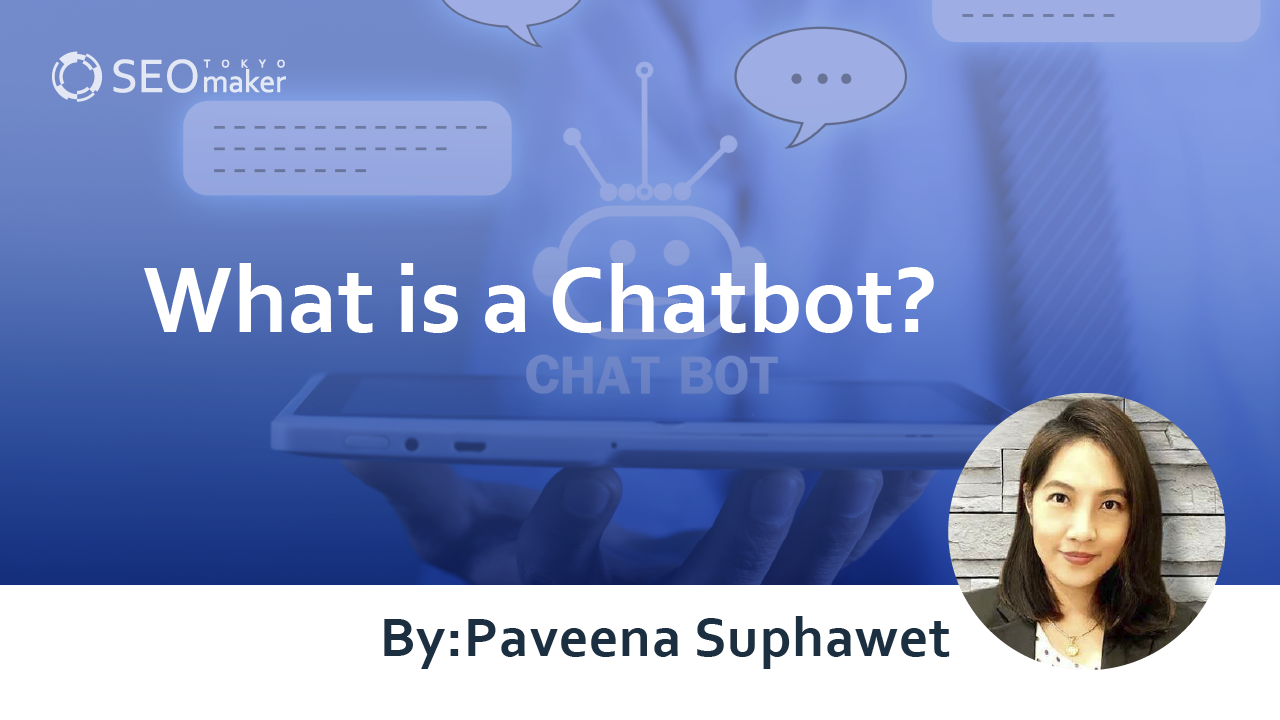What is a Chatbot? : Explaining Types, Advantages, and Disadvantages in Detail
contents
- 1 Chatbot Explained
- 2 Difference Between AI and Chatbots
- 3 The Main Purposes of Implementing Chatbots
- 3.1 Reduction in Operational Workload
- 3.2 Acquisition of Prospective Customers
- 3.3 Improving Conversion Rates (CVR) with Chatbots
- 3.4 Benefits of Implementing Chatbots
- 3.5 24/7 Customer Support
- 3.6 Data Analysis of Customer Behavior
- 3.7 Drawbacks of Implementing Chatbots
- 3.8 Time-Intensive Implementation
- 3.9 Operational Costs Incurred
- 4 Limitations in Handling Inquiries
- 5 Summary

A chatbot is an automated program designed to respond to customer inquiries, offering benefits such as reduced operational workload and potential customer acquisition.
From a customer perspective, chatbots allow for inquiries at any time, lowering the barrier for initiating contact.
This article will cover the basics of chatbots, their advantages, and disadvantages. By reading to the end, you’ll gain a proper understanding of chatbot types, benefits, and drawbacks, so please continue reading.
Chatbot Explained
A chatbot is a program that conducts conversations automatically through text or voice. The term “chatbot” combines “chat” (conversation) and “robot,” providing interactions that mimic human conversation.
Commonly used in messaging apps and AI speakers, chatbots have become increasingly prevalent in customer service on websites. With the evolution of artificial intelligence, chatbot functionality continues to advance.
We will explain the mechanics of chatbots and how they differ from AI.
How Chatbots Work
The operation of a chatbot involves the following mechanisms:
- Keyword analysis
- Scenario and rules
- Database creation
While it may seem like chatbots understand and formulate appropriate responses, current technology does not allow for imbuing chatbots with thought or emotion. Therefore, adding scenarios and accumulating daily conversation logs is crucial.
Keyword Analysis
The reason chatbots can interpret inquiries or questions is through keyword analysis, which involves analyzing important keywords from user messages.
The higher the accuracy of keyword analysis, the clearer the understanding of the message content, allowing for smoother interactions. Incorporating AI can enhance keyword analysis accuracy through machine learning.
Scenarios and Rules
Scenarios and rules form the crucial framework when utilizing chatbots. For example, setting a scenario or rule like “For inquiry X, respond with answer Z” enables the chatbot to automatically reply in such instances. By establishing multiple scenarios and rules, the chatbot can address various user inquiries.
For AI-powered chatbots, conversation logs can be used to automatically add to the scenarios and rules.
Database Implementation
Database implementation refers to saving interactions between the chatbot and users as conversation logs in a database.
Basic chatbots do not create conversations based on their own thoughts or conduct free-flowing exchanges.
Therefore, it’s necessary to store conversation logs in a database and formulate responses based on historical data.
As the database grows, the chatbot’s response patterns expand, making the long-term accumulation of conversation logs crucial.
Difference Between AI and Chatbots
There is a clear distinction between chatbots and Artificial Intelligence (AI).
Basic chatbots are “artificially unintelligent” programs that automatically respond to user messages, leading to standard conversational patterns.
In contrast, “Artificial Intelligence” contemplates the meanings behind user messages and responds based on its own thought process. Thus, unlike chatbots, AI delivers responses that are thoughtfully considered for each message.
This fundamental difference in technology sets AI and chatbots apart as distinct entities.
Types of Chatbots
There are various types of chatbots, each differing in the content and functionality of their responses to user messages. Not all chatbots need to have advanced features; it’s important to evaluate the trends in usual inquiries and questions and select a chatbot that sufficiently meets these needs.
Here, we will discuss the different types of chatbots.
Script-Based Chatbots.
Chatbots that respond based on predefined rules or scripts are classified as script-based. They are designed like a flowchart, with responses tailored to user choices.
This is a common type of chatbot, suitable for handling specific user inquiries or presenting company products and services.
AI-Powered Chatbot
AI-powered chatbots analyze the user’s question intent through artificial intelligence and generate appropriate responses. Unlike script-based chatbots, which cannot reply to queries outside the predetermined options, AI-powered chatbots can handle a wide range of spontaneous questions.
Their ability to learn from past data and improve over time through machine learning is a distinct feature. They are recommended for scenarios where user inquiries vary greatly and flexibility in responses is desired.
Hybrid Chatbots .
Hybrid chatbots combine the features of both script-based and AI-powered chatbots. They operate on a question-and-answer basis, applying either approach depending on the user’s query.
- Script-based: Display responses set for specific keywords
- AI-powered: Analyze message content to provide appropriate responses
This type merges the strengths of both script-based and AI models, making it one of the most versatile types of chatbots. They are ideal for those seeking more functionality than script-based models but at a lower cost than AI-powered ones.
Dictionary-Based Chatbots .
Dictionary-based chatbots operate by responding automatically when user inquiries contain pre-registered keywords. This is the simplest type of chatbot, characterized by low cost.
Like script-based chatbots, they cannot handle unregistered keywords, so a broad range of keywords needs to be registered for wider applicability.
Thus, they are sufficient for handling predictable user inquiries and can effectively manage user interactions.
The Main Purposes of Implementing Chatbots
The primary purpose of implementing chatbots is to reduce the workload associated with daily inquiry responses. Additionally, chatbots play a crucial role in marketing by aiding in prospect acquisition and improving conversion rates (CVR), making their objectives quite diverse.
In this section, we will explain the purpose of implementing chatbots.
Reduction in Operational Workload
A key goal of chatbots is to streamline customer inquiry responses, thus reducing the operational workload. For companies handling regular inquiries, such as through phone calls, managing these without a dedicated department and substantial budget can be challenging.
If inquiries are not managed effectively, it can deteriorate the quality of service provided by the company.
Using chatbots allows for handling these inquiries without relying on staff, saving costs and enabling employees to focus on other tasks, thereby enhancing overall productivity.
Especially in today’s internet-driven society where online inquiries are prevalent, the implementation of chatbots serves a significant role.
Acquisition of Prospective Customers
Apart from operational efficiency, chatbots are also effective in acquiring prospective customers.
Without chatbots, potential customers may visit a website but leave without making an inquiry, making it challenging to establish contact.
However, by integrating chatbots, even those customers hesitant to make direct inquiries can easily communicate, potentially increasing their interest.
Therefore, the presence of chatbots can significantly impact the rate of prospect acquisition.
For websites experiencing poor engagement, introducing chatbots is recommended as an efficient method to capture prospective customers.
Improving Conversion Rates (CVR) with Chatbots
Chatbots allow for immediate interaction with customers, enabling the identification of specific issues to enhance conversion rates (CVR). Traditional website analytics could track access and bounce rates but pinpointing exact problems was challenging.
However, chatbots can analyze “responses to answers” and “customer psychology” in detail, facilitating the collection of more data than before, thus becoming a valuable marketing tool. Ultimately, this leads to an increase in inquiries and requests for materials through the website, improving CVR.
Benefits of Implementing Chatbots
Implementing chatbots enables 24/7 customer support and analysis of customer data, previously unattainable. Beyond increasing inquiry numbers, chatbots help re-evaluate customer needs and foster new product development, offering significant advantages.
Here, we will discuss the benefits gained from implementing chatbots.
24/7 Customer Support
As chatbots automate responses, they can provide round-the-clock service every day of the year. Unlike phone support, which is limited to business hours and weekdays, chatbots ensure continuous customer engagement, enhancing satisfaction. This is particularly beneficial for companies that previously couldn’t afford round-the-clock staff, improving inquiry rates.
Lowering Inquiry Barriers
Chatbots, often featuring a messaging-style UI on websites, lower the barrier for customer inquiries, making it more accessible for users. Many customers hesitate to make inquiries,
-thinking it unnecessary for minor questions
-out of politeness if not intending to purchase.
However, even these interactions can lead to sales, making it crucial for businesses to cater to all potential customers. Chatbots facilitate this by providing an easy and hassle-free way to ask questions.
Data Analysis of Customer Behavior
Chatbots, aligning with their implementation purpose, store conversational logs, allowing for later analysis of customer behavior. This not only aids in website improvement but also in refining target marketing strategies and identifying issues from various perspectives. Furthermore, chatbots can help evaluate current products and services from a customer needs perspective, contributing to new product development.
Thus, customer data collected through chatbots is invaluable for marketing, highlighting the essential role of chatbots in information gathering.
Drawbacks of Implementing Chatbots
Key considerations for chatbot implementation include the time required for setup and ongoing maintenance costs.
Scenario-based bots need pre-defined scenarios and keywords, while AI-powered bots require extensive operation to improve accuracy. It’s essential to plan for operational structure.
Here, we’ll go over the downsides of adopting chatbots.
Time-Intensive Implementation
Chatbot setup, involving scenario and response creation, can be time-consuming, especially for AI-powered bots that need prior customer query learning, adding to the effort. Immediate utilization post-implementation is unlikely, often requiring months of preparation. Companies without an existing operational framework may face challenges, making outsourcing a recommended option.
Operational Costs Incurred
While chatbots automate inquiry responses, regular adjustments and operations are needed across all types. They accumulate past data to learn and provide suitable responses, thus neglecting maintenance can lead to poor-quality responses. Regular “tuning” or maintenance is essential, incurring operational costs, yet it can ultimately reduce traditional business expenses. Calculating both implementation and operational costs is vital for informed chatbot utilization decisions.
Limitations in Handling Inquiries
Non-AI chatbots, like dictionary or scenario-based, cannot respond to unprogrammed customer queries. Unanticipated inquiries might go unanswered, requiring extensive scenario and keyword planning beforehand. AI-powered bots, though time-intensive for accuracy enhancement, can handle out-of-scope questions. AI chatbots are recommended for dealing with vast scenarios or unpredictable customer queries.
Summary
This article has covered the basics of chatbots, including the advantages and disadvantages of their implementation. Chatbots are categorized based on their functionality and mechanisms, primarily into AI-equipped types, and non-AI types like dictionary-based or scenario-based. The suitable type varies depending on the anticipated questions and number of scenarios, so it’s important to assess your company’s operational aspects and consider implementation within a cost-effective range. Furthermore, customer service via chatbots requires optimal user engagement for each marketing segment. Our company can design content that understands user psychology. If you are facing challenges with content marketing, feel free to contact us.










![What is a Description? Explaining the Meaning, Writing Style, and Changing Word Count – [2023 Edition]](https://www.switchitmaker2.com/en/wp-content/uploads/2024/09/what-is-description.webp)










